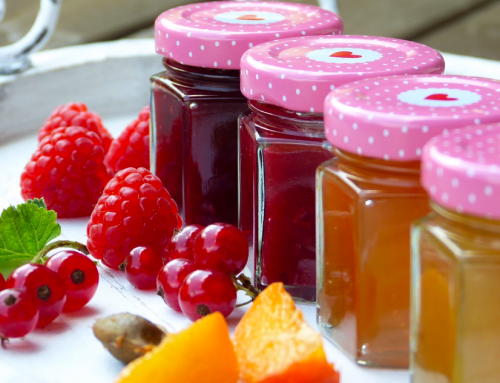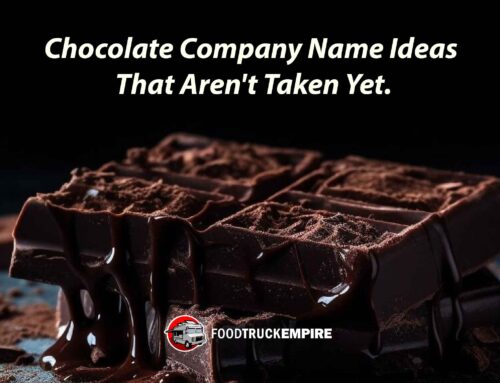A bakery business isn’t that difficult to start but it comes with a lot of planning. You can’t just release all your baked goods overnight without carefully planning how you’re going to market and sell it. You will need to figure out your menu, where to get your supplies, the costing for each of your baked goods, and how to package them. You will have to jot everything down, lay the groundwork for all your needs, and set goals to meet them.
If your love and passion for baking have made you decide to put up a bakery, then you’re in the right place to figure out how to start on one. As with all other businesses out there, you will need a business plan and we’re here to help you how to make one.
Why Do You Need A Business Plan?
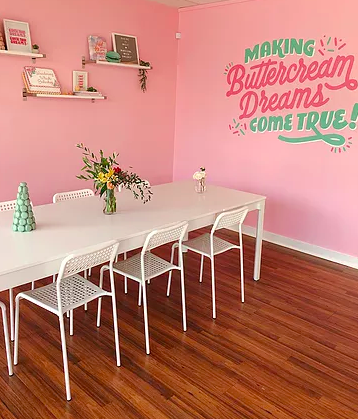
Do you need a business plan for a bakery?
A business plan is a guideline to help you figure out what direction your business is heading and what goals you want to achieve. It’s also a great plan to present to banks if you’re looking for a loan and for potential business partners if you’re looking for investors. But most of all, you need a business plan to help yourself. It will serve as your guide on how to achieve your goals and even compute your possible profit.
By the end of this guide, you’ll be able to draft up your business plan or you can use the template we’ll provide that’s available to download below.
Executive Summary
Start your bakery business plan with an executive summary section. This section is all about providing brief information on your business without getting all the details in. The goal of this section is to get the whole picture of what your bakery is all about at a single glance.
Just 2 to 3 sentences per category should be enough to express your ideas. You’ll get the chance to explain everything specifically in the later part of the business plan.
Introduction
Imagine having a booth at a food fair with dozens of other businesses right next to you. What are the things you can put on your sign that when a customer passes by they’ll be able to figure out what you’re selling in just a couple of seconds?
That is what you are going to write in your introduction. You are going to supply information that’s eye-catching, attention-grabbing, but also sticking to the realness of your bakery.
Related Reading: The 6-Step Marketing Growth Plan for a Home-Based Bakery
Here’s an introduction example you can follow:
Quick Bites is a bakery that offers a new take on the bread scene for New Yorkers on the go. All the buns are stuffed with delicious filling, both savory and sweet to satisfy a hungry tummy in need of that quick snack that’s conveniently packaged to eat on the run.
Just by reading that example, you’ll know that Quick Bites is:
- A bakery that supplies buns with filling that is either savory or sweet.
- Located in New York.
- Catered for people looking for a quick snack.
Capture your reader’s attention by keeping things light yet informative in this part of the business plan.
Company Description
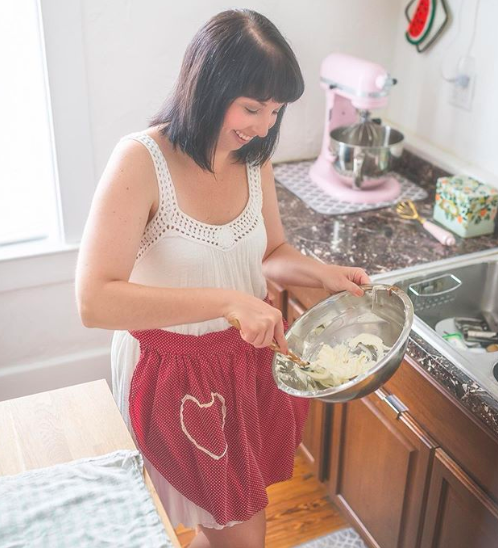
Write a company description.
Every bakery business has a background. You’ll want to include how many years in the making has your bakery idea been going around and who is in charge of it. Will it be a partnership? Will you be doing the baking and managing at the same time? Putting in a little bit of your bakery’s background helps give the reader a brief understanding of what your business’s managing strategy is going to be.
Services
The first thing on your mind when you decided on putting up a bakery is probably the menu. And though that’s quite exciting to draft up at once, you’ll have to decide on the services you’re going to offer first by figuring out what kind of bakery you’re going for.
Here is a guide to choose the type of bakery you want:
- Full service – This includes having your own space with a kitchen and baking area, a display area for your baked goods, and dine-in options with drinks such as coffee or tea.
- Take-out service – This is a type of bakery where you have a small space just to display your baked items and offer a drink or two. Customers can just line up and order your buns to go.
- Online – This type of business does not require any space. This is all done in your kitchen at home. Customers will just place their orders online and will pick them up or have them delivered.
By deciding this early on, you can have a clear image of what your bakery is going to look like and how it will operate.
Customer Focus
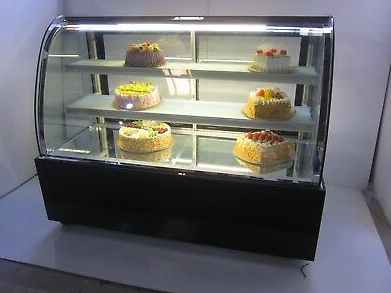
Cake bakery display case.
We know what you’re thinking: everyone is your potential customer. And though that is the goal, you still need to list down your target customers so you can focus on a certain product line to sell.
Take for example Quick Bites. As mentioned in the introduction, the bakery is for those who are looking for a quick snack to eat. Therefore, their target customers are mostly working people who do not have time to sit down for a meal and are looking for a convenient yet delicious food replacement while still having the time to work.
Related Reading: 101 Creative Bakery Names You Can Use Right Now
With this focus in mind, Quick Bites’ product line of filled buns fit this category since busy people can eat their buns with one hand only so they can focus on doing other things instead.
Again, be sure to keep this short. You can add in the details later on in the Target Market section of the business plan.
Mission Statement
Every business has a vision no matter how small it is. If you just plan to have a simple bakery up and running, you still have goals to meet. This is how businesses succeed since a mission statement allows owners and staff to be reminded of the direction they’re heading.
An example mission statement for Quick Bites would go like this:
Quick Bites’ mission is to serve a variety of freshly baked bread, particularly buns with different filling, that can satisfy a hungry tummy on the go. Our buns are nutritious and are packed with only real ingredients. No artificial flavors will be used and no preservatives are added. Our bakery is committed to making quick meals that are convenient to eat while working and we ensure that they are also healthy and affordable.
Company Concept
It’s time to get all the details down for your bakery’s concept. Think of it as the longer and more detailed version of your executive summary. This section is quite easy and fun since you can now list everything you’ve planned your bakery to have.
Will you be serving artisanal bread? How about puff pastries? Will you be including cakes? Will you also be offering coffee and tea? Will you be baking on the premises or will you have a commissary located somewhere? What are your operating hours?
All these things are important so list down everything you can think of that discusses what your bakery’s concept is going to be.
Market Analysis
At this point, you’re probably wondering why you should care about analyzing the baking industry around you when all you want is to just bake your bread and sell them.
Well, let’s put it this way: baking bread might be easy but the selling part may be a little difficult if you don’t know your target market, the bakery business trend in your area, and the competition around you.
Target Market
Writing down your target market is easy since you already mentioned it above on your Customer Focus section. Just add in more details so you or anyone else who will read this will understand more about which group of people do you cater to.
Include the following in your target market list:
- Age group
- Working-class or students
- Location (local office workers, neighborhood families, etc.)
Industry Analysis
To ensure your bakery is going to be a success, analyze the trend surrounding this type of business in the area you’re planning to open this up. For instance, if you’re like Quick Bites whose target market is the working class, then you’ll need to check the area around your planned bakery if this is a place where several offices are located.
You may also include a study on whether or not people like artisanal bread or healthy bread. This can help you check whether your planned menu can sell successfully or not.
For online bakery businesses, you can focus on the factors that people tend to look at when they’re ordering food online. This includes:
- The preferred number of days for pre-orders.
- Delivery times and rates.
Competitive Analysis

Cupcakes.
You’ll have to come to terms with the fact that you’ll have competition once you open your bakery business. That’s not entirely a bad thing. Having competition can help you analyze the prices for your baked items and it would also draw in interest from other potential customers. The trick here is to be better than the rest and that is why you are doing this business plan so you can succeed when you start selling your items.
If you are putting up a physical store, list down the bakeries surrounding your potential location. If you are an online store, you can also compare other online bakeries in your neighborhood.
You may even do a comparison. Write down the top three business names of your competitors, their strengths, and their weaknesses, and see where your bakery stands out.
Management Structure
Knowing the roles each person plays in your bakery business is important. It sets a clear and distinct understanding so that no arguments will happen in the future regarding their duties. This is particularly helpful when you’re in a business with a partnership so there are specific roles and duties indicated per person.
But even if you’re running the business on your own, it’s still important to write it all down so you’re aware of what else you need to do and if you need to delegate some tasks.
Related Reading: Learn how a Culinary Grad Built a $26k/Month Pastry Shop.
You can divide these into the following:
- Management Team – These are the people who will be running the business, those who will be in charge of sales and marketing, bookkeeping, filing and processing of legal documents, research and implementation, and ordering of supplies.
- Bakers – These will include the people in charge of baking your products.
For a bigger bakery with dine-in capacity, you may include these as well:
- Servers – These will include the people who will prepare the food to serve such as reheating bread or assembling them.
- Baristas – If your bakery is serving coffee, these are the people in charge of working the espresso machine.
However, some bakeries have their servers work as baristas at the same time so it’s important to state this clearly so your employees will know their duties.
- Cashiers – These people are in charge of manning the counter for any purchases.
- Clean-up Crew – These will include people who are responsible for cleaning the tables, dishes, and everything else that you need to sanitize your bakery.
Product Line and Services

Cake pops are a favorite at bakeries.
This section is the moment you have been waiting for. This is where you’ll place all the products you are going to offer in your bakery. Be it puff pastries, sandwiches, or artisanal bread, just be sure to write them all down. Be specific and indicate the prices as well.
Aside from your product line, you can include other services you wish to offer. Do you do wedding cakes? How about customized cakes? Would you be willing to supply bread to other businesses? Are you open to catering? Putting this all down in this section will help you organize your thoughts so you can put them into action carefully.
Sales and Marketing
A very helpful way to start marketing your bakery is to combine your target market and product line to bring attention to what you’re selling. For Quick Bites, since their target market is for people on the go, they can push how convenient their buns can be eaten while they’re walking on the street. They can also advertise the many flavors of buns they can offer from sweet fillings such as custard or jam to savory ones such as pepperoni, cheese, or vegetables.
Social media is also a great way to market your business. By putting up nicely photographed images of your bread and knowing the right trending hashtags to use, you can capture a huge number of followers.
But if there’s one marketing plan that’s overlooked by many, it’s taking advantage of the sense of smell. Freshly baked bread is pleasing to the senses and can entice customers to check out what you’re baking. So if you have a physical store, use the delicious smell of your baked bread by letting it waft out into the streets to lure passersby. You’ll be surprised just how fast people will flock to your bakery when you allow the scent of your baked goods to fill them.
Financial Plan

Red rose cupcakes.
We’re now on to the nitty-gritty part of the business plan. This includes where you’re going to get the money to fund your bakery and forecast the expenses and possible profit you’re going to make. Why is this important? It’s so that you’ll know early on if the concept, product line, and proposed services you’re going to offer in your bakery is profitable or not.
Keep in mind that you don’t really need a lot of money at all if you’re just starting your bakery business. As previous guest on the podcast Jennifer Jacobs explained, she spent the first few years operating a home-based bakery business. Jennifer operated her business for years while holding down a full-time job, before opening the doors to her first retail space. This is the path she recommends for other food entrepreneurs too.
Funding Request
The only thing you need to focus on this section is to ask yourself, where are you going to get the money to start your bakery? Whether it is a small online business wherein you’re the only one who will be doing the baking and selling, or it’s a big bakery with dine-in options and lots of staff, you have to be clear where to get the capital for all of this.
Getting a loan from the bank or inviting investors are a few options you can choose. This is also the reason why you’re making this business plan to convince them to give you a loan or to join in funding your bakery.
Financial Forecast

Bakery Food Truck.
You will need to list down all your planned expenses for your bakery. For a simple online bakery business, this includes:
- Oven
- Refrigerator
- Packaging Materials
- Ingredients (flour, sugar, salt, butter, etc.)
If you are planning to open a physical store with dine-in options, you’ll also have to include these:
- Store signage
- Bread display rack
- Point-of-sale system
- Chairs and tables
- Trays, plates, and cutlery
- Espresso machine
You’ll also need to spend on your advertising materials whether these are in social media or print. The bottom line is, listing down all your proposed expenses can help you forecast the amount of money you need to start your bakery. According to professional bakers we interviewed for this piece, starting up a bakery costs $100,000 and $750,000. With these numbers, you can then set up a budget and start looking around for affordable equipment for your bakery.
Aside from your expenses, you’ll also need to do a break-even analysis so you know if you’ll be able to receive any profit from your proposed product line and services.
Operational Plan
Attention Bakery Founders: Download our Food Business Startup Kit for Startup Templates
Writing all your plans down is one thing but to set up a timeline for your operations is another. This sets the gears in motion for when you plan to execute your business.
Do a simple timeline following this example:
Date Plan[Insert Date Here] – Finalize the design and layout of the bakery and secure all rental documents such as permits and business registration.[Insert Date Here] – Start construction.[Insert Date Here] – Hiring and training of staff. You may also start advertising your bakery’s products and opening date.[Insert Date Here] – Start operations for the bakery.[Insert Date Here] – Achieve goals and reach break-even.
This is an example of a physical bakery store. For online bakeries, your timeline should be shorter and simpler.
Appendix
This section is where most of your documentation to back up your business plan is included. You can also add photos of your bakery’s layout, your proposed design packages, and payroll plans.
Download Templates
Here are templates and real bakery business plan examples you can use as inspiration to setup your own business structure. These are available for download in PowerPoint, Google Docs, and PDF files.
Bonus Tips
- If you are planning to open a physical store, be sure to delegate tasks. It’s fun to be hands-on with everything going around your bakery but you can’t manage the counter and be the baker at the same time. So appoint specific people for different roles but also have them multitask so you don’t hire too many people.
- Plan your menu accordingly. You do not want to bake a lot of bread and let them go to waste at the end of the day. Study the foot traffic around your area as well as your possible bestselling item. For instance, if Mondays are the busiest, then maybe you can double up on your recipes for a certain bread that everyone seems to like best. But you can slow it down on Tuesdays and focus on other items instead.
Don’t be intimidated in starting up your bakery and making this business plan. The point of the business plan is that it’s supposed to help you go through the finer details of your bakery. If the whole bakery business plan seems too complex for you then you just failed in understanding the purpose of it. It has to be easy to read and understand because it will serve as your guide.
Where are you planning to open your bakery? We’re just as excited as you are for this new adventure and look forward to hearing about the plans you put in place. Don’t forget to sign up for our free Food Business Startup Kit for exclusive interviews with bakery founders.


